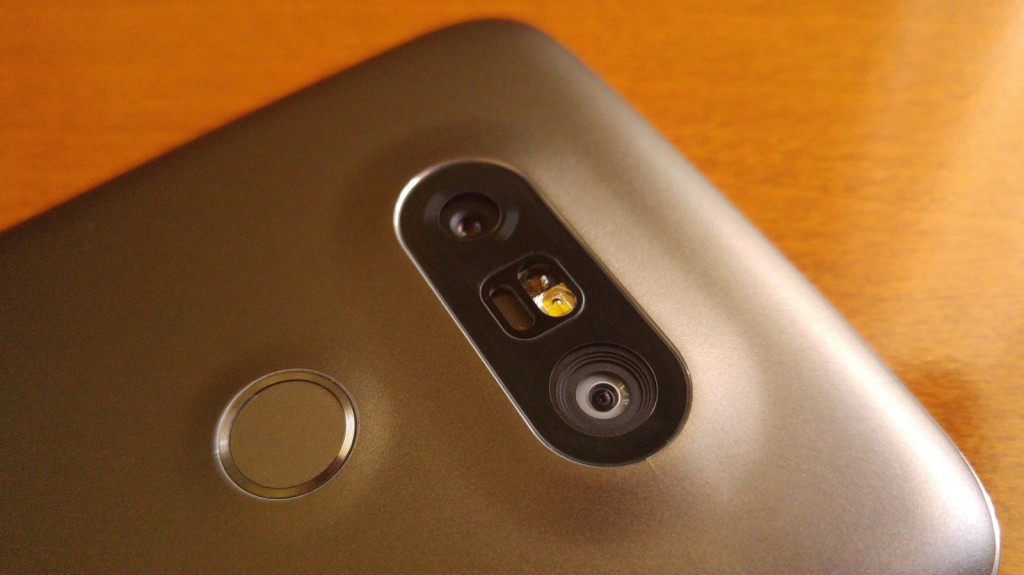The breakthrough that changes everything OpenAI has revealed a compact offline AI model that can run fully on-device. No cloud connection. No data usage….
What’s the point of LG G5’s two rear cameras?

Using two rear cameras on a single smartphone might seem excessive, but it’s nothing new. HTC dallied with this idea back in 2014, but arguably didn’t quite crack the big time. But camera technology has never been better, and smartphone makers are trying this whole thing again.
LG is first to get its LG G5 out the door and into consumer hands, with the handset available in South Africa from 15 April.
Its camera technology is a little different to the Huawei P9’s, which is a blessing and a curse. While Huawei uses its two 12MP cameras in tandem (simulating one camera in theory), the LG G5 keeps each of its sensors independent of each other.
Related: LG G5 announced with ‘LG Friends’ peripherals, bold new smartphone vision
There’s a 16MP primary camera, with a large f/1.8 aperture and a secondary 135-degree wide-angle camera, with an 8MP camera and a f/2.4 aperture. Both cameras can use the phone’s optical image stabilisation system — which nullifies shakes on three independent movement axes — and a laser focus system, which improves the cameras’ near focus performance.
I recently spent a hot afternoon at Cape Town’s V&A Waterfront to put the LG G5, and its camera duo, through its paces like a tourist. For each scene, I took two snaps in the exact same spot — one with the wide-angle camera, and the other with the primary camera — and stitched each together to show the differences.
Related: Is the LG G5 better than the Galaxy S7? Here’s what reviewers are saying
For a more accurate comparison of each image, blow them up by clicking on each.
Primary camera: LEFT | Wide-angle camera: RIGHT
Swapping between the two cameras is made easy thanks to LG’s camera software. Tapping an icon at the top of the screen changes which camera is used. This can also be done by zooming in and out — something the company’s camera add-on does using a wheel.
And as you can imagine, the wide-angle lens (right) captures much more of the scene, with benches, other blue dogs and even the dog on the right’s backside in view too. How much more of the scene, you ask? The snap on the left was taken using the primary camera.
Wide-angle camera: LEFT | Primary camera: RIGHT
This only works for some snaps though. In terms of landscape photography, the wide-angle camera doesn’t work well if there’s nothing worthwhile in the foreground to capture.
That should go without saying though. You’ll largely use the wide-angle lens when snapping a group of people, or an atmospheric hallway, but its largely an exercise in learning which camera can do what.
Primary camera: LEFT | Wide-angle camera: RIGHT
The Cape Wheel is always a great subject, and suits the wide-angle perfectly.
Both cameras do extremely well when balancing whites in high-contrast environments, but they lack the sharpness of other smartphone cameras, like the Samsung Galaxy S7 and even the LG G4.
Nevertheless, you’ll almost definitely not get the atmospheric snap of the wide angle on either of those phones.
Primary camera: LEFT | Wide-angle camera: RIGHT
Finally, this is the best example of the cameras’ differences.
That wide-angle lens is incredibly broad, which also means that you’ll have to keep your supporting fingers on the side of the phone, not alongside the cameras at the back.
So, do we really need two cameras?
There’s a question you can’t really answer in a day. I intend to explore the phone’s abilities more in a full review, but for now what I can say is this: it’s nice to have. It’s not a necessity, but it’s nice to have.
Think about it like this: you don’t really need a couch with a fancy footrest, but it’s useful in certain instances. You might use it once or twice a day or even less, but if can’t use it any more, you’ll definitely miss it. Also, if you didn’t have a couch with a footrest before, you wouldn’t miss it if it wasn’t there anyway. It’s something you don’t really know you want until you’re given the option.
Related: LG G4 review: old world charm, new world chic
That’s effectively how I could describe my time with the LG G4. It’s a great phone, with a brilliant set of cameras, but I never once thought I felt that I needed a wide-angle lens at the back.
But of course, perceptions change, so keep locked to Gearburn for a more in-depth review of the LG G5 as a whole.






